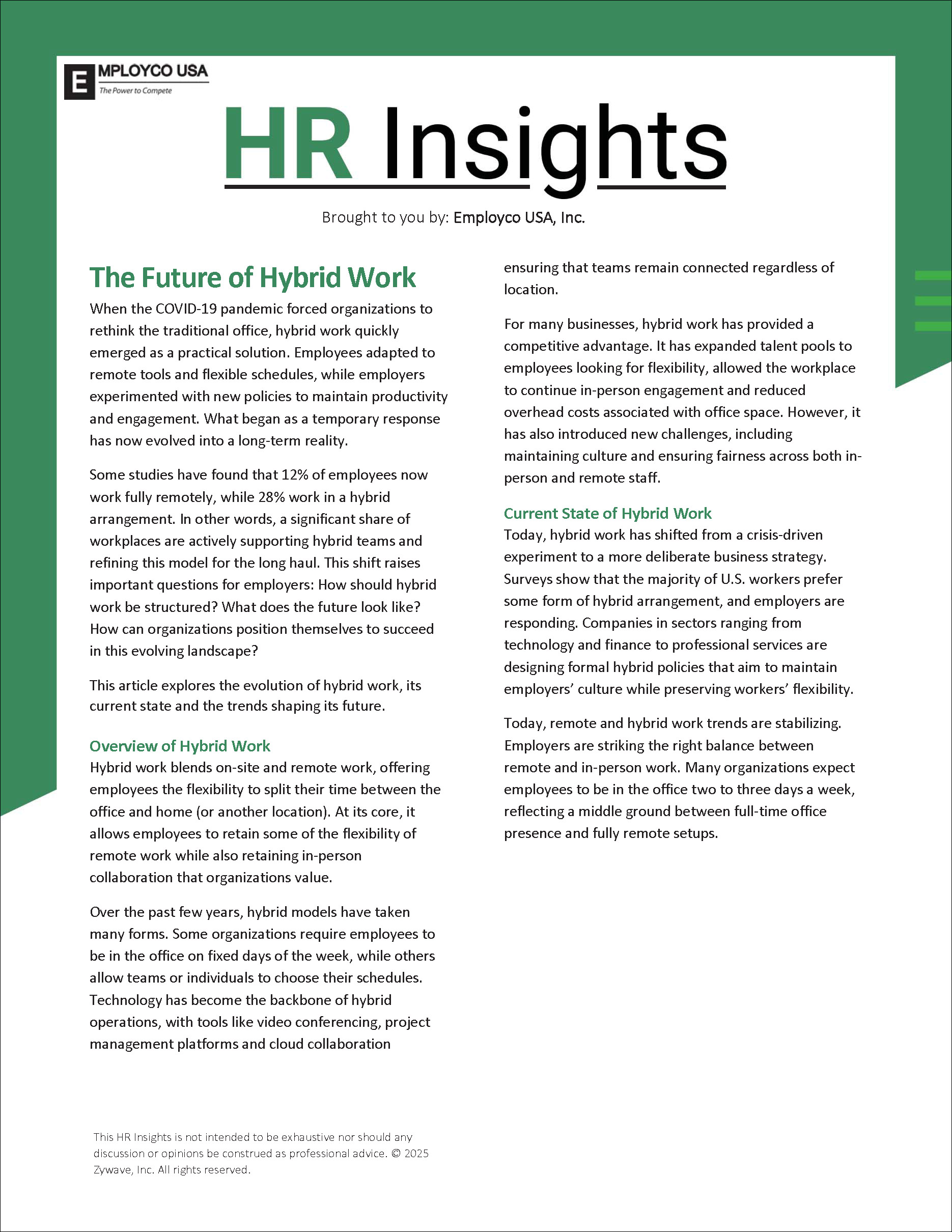
When the COVID-19 pandemic forced organizations to rethink the traditional office, hybrid work quickly emerged as a practical solution. Employees adapted to remote tools and flexible schedules, while employers experimented with new policies to maintain productivity and engagement.
What began as a temporary response has now evolved into a long-term reality. Some studies have found that 12% of employees now work fully remotely, while 28% work in a hybrid arrangement. In other words, a significant share of workplaces are actively supporting hybrid teams and refining this model for the long haul. This shift raises important questions for employers: How should hybrid work be structured? What does the future look like? How can organizations position themselves to succeed in this evolving landscape?
Our latest HR Insights article explores the evolution of hybrid work, its current state, and the trends shaping its future. Click the following link to read: The Future of Hybrid Work.
